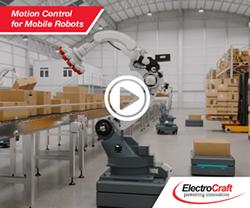Recent advances in robotics and artificial intelligence (AI) have made it possible to automate many processes that were once thought to be too delicate or complicated for machines. So what is stopping cold chain businesses from taking advantage of these technologies?
A Chilly Environment – Freezer & Refrigerated Automation & Efficiency
Article from | Prime Robotics
In these days of heightened awareness of workplace safety and the advantages of automation, it can be easy to understand why more cold supply businesses are looking for ways to automate their warehouses. Recent advances in robotics and artificial intelligence (AI) have made it possible to automate many processes that were once thought to be too delicate or complicated for machines. So what is stopping cold chain businesses from taking advantage of these technologies? This blog post will explore the benefits of automation and discuss some specific ways it can be used in cold supply warehouses.

Issues with Temperature-Specific Requirements
One of the most difficult factors about a cold supply chain is that the products being managed often have specific temperature needs. It can make it difficult to find a storage solution that meets all requirements. For example, some products may need to be stored at freezing temperatures, while others may need to be kept at ambient or refrigerated temperatures. Although some product standards are not as strict, food and pharmaceutical products must adhere to specific cold chain requirements set by the FDA and WHO standards:
Ambient temperature, known as room temperature, has a much more flexible range than either freezing or refrigerated temperatures. In general, ambient temperature refers to any temperature that is comfortable for humans to work in. Depending on the surrounding climate and humidity, this can range from 15°C to 30°C (59F to 86F).
Refrigerated temperature is a cold storage temperature above freezing, typically between 0°C and 15°C. This temperature range is often used for food storage, as it helps to keep perishable items fresh for longer periods of time. Many pharmaceutical products must also be stored in this temperature range to be effective.
Freezing temperature is below freezing, typically anywhere below -15°C (5F). Freezing temperatures are often used for storing meat, fish, and other items that need to be kept at a cold temperature for optimal preservation.
Cold Temperature Reduces Human Efficiency
Working in cold temperatures can significantly impact human efficiency. In fact, 53% of employees report being less productive when they work in cold temperatures. Another Cornell study reveals that employees drastically increase their mistakes at work when the room temperature drops from 25°C to 20°C (77F to 68F). As a result, you can expect to see several common problems in your employees:
- Slower reaction times
- Increased risk of injury
- Lower quality of work
- Higher sick-leave occurrence
Cold Temperatures Induce Long-Term Illness and Injury
Humans are not designed to work in “cold stress” environments. The dangers of working in cold temperatures have been well documented. Studies have shown that exposure to cold temperatures can lead to many long-term health problems, including:
- Frostbite
- Trench Foot
- Hypertension
- Cardiovascular disease
- Respiratory disease
Cold & Refrigerated Automation with Prime Robotics
One of the best ways to improve working conditions in cold storage warehouses is to automate as much of the process as possible so that your employees can spend minimal or no time in the cold environment. Prime Robotics is leading the industry in developing “Cold-Climate Automation” and we’re ready to help you get your employees to warmer environments!
In addition to improving working conditions for your employees, Cold-Climate AMR systems can also help to improve your bottom line. These systems are highly efficient and can help to increase your warehouse’s productivity by up to 1000%. Contact us today to learn more about how our solutions can optimize your cold supply business.
The content & opinions in this article are the author’s and do not necessarily represent the views of RoboticsTomorrow
Comments (0)
This post does not have any comments. Be the first to leave a comment below.
Featured Product

